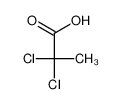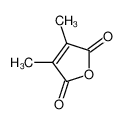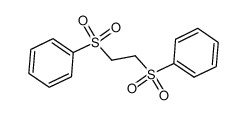1.Identification
1.1 GHS Product identifier
| Product name | dalapon |
|---|
1.2 Other means of identification
| Product number | - |
|---|---|
| Other names | 2,2-dichloropropionic acid |
1.3 Recommended use of the chemical and restrictions on use
| Identified uses | For industry use only. Herbicide |
|---|---|
| Uses advised against | no data available |
1.4 Supplier's details
| Company | MOLBASE (Shanghai) Biotechnology Co., Ltd. |
|---|---|
| Address | Floor 4 & 5, Building 12, No. 1001 North Qinzhou Road, Xuhui District, Shanghai, China |
| Telephone | +86(21)64956998 |
| Fax | +86(21)54365166 |
1.5 Emergency phone number
| Emergency phone number | +86-400-6021-666 |
|---|---|
| Service hours | Monday to Friday, 9am-5pm (Standard time zone: UTC/GMT +8 hours). |
2.Hazard identification
2.1 Classification of the substance or mixture
Skin irritation, Category 2
Serious eye damage, Category 1
Hazardous to the aquatic environment, long-term (Chronic) - Category Chronic 3
2.2 GHS label elements, including precautionary statements
| Pictogram(s) |  |
|---|---|
| Signal word | Danger |
| Hazard statement(s) | H315 Causes skin irritation H318 Causes serious eye damage H412 Harmful to aquatic life with long lasting effects |
| Precautionary statement(s) | |
| Prevention | P264 Wash ... thoroughly after handling. P280 Wear protective gloves/protective clothing/eye protection/face protection. P273 Avoid release to the environment. |
| Response | P302+P352 IF ON SKIN: Wash with plenty of water/... P321 Specific treatment (see ... on this label). P332+P313 If skin irritation occurs: Get medical advice/attention. P362+P364 Take off contaminated clothing and wash it before reuse. P305+P351+P338 IF IN EYES: Rinse cautiously with water for several minutes. Remove contact lenses, if present and easy to do. Continue rinsing. P310 Immediately call a POISON CENTER/doctor/… |
| Storage | none |
| Disposal | P501 Dispose of contents/container to ... |
2.3 Other hazards which do not result in classification
none
3.Composition/information on ingredients
3.1 Substances
| Chemical name | Common names and synonyms | CAS number | EC number | Concentration |
|---|---|---|---|---|
| dalapon | dalapon | 75-99-0 | none | 100% |
4.First-aid measures
4.1 Description of necessary first-aid measures
General advice
Consult a physician. Show this safety data sheet to the doctor in attendance.
If inhaled
Fresh air, rest. Refer for medical attention.
In case of skin contact
Remove contaminated clothes. Rinse skin with plenty of water or shower.
In case of eye contact
First rinse with plenty of water for several minutes (remove contact lenses if easily possible), then refer for medical attention.
If swallowed
Give one or two glasses of water to drink. Do NOT induce vomiting. Refer for medical attention .
4.2 Most important symptoms/effects, acute and delayed
VAPOR: Irritating to eyes, nose and throat. LIQUID: Will burn skin and eyes. Harmful if swallowed. (USCG, 1999)
4.3 Indication of immediate medical attention and special treatment needed, if necessary
Treatment is symptomatic and supportive. Oils should not be used as either cathartics or dermal cleansing agents, as they increase absorption. Gastric lavage and use of activated charcoal and sodium sulfate are indicated for ingestion. If dermal exposure occurred, contaminated clothes should be removed, and the skin should be thoroughly cleansed with soap and water. Management of seizures in both children and adults is with Valium or phenobarbital. Respiratory depression and even respiratory arrest, especially with concomitant use of Valium and phenobarbital in children, may occur. These drugs preferably should be used only in critical care areas where emergency endotracheal intubation can be performed. /It is recommended/ that epinephrine not be utilized in patients with organochlorine poisoning, as the organochlorines induce myocardial irritability and ventricular arrhythmias may occur. However, dopamine may be necessary in the event of hypotension unresponsive to fluid administration, and epinephrine may be necessary in the event of cardiopulmonary arrest. /Organochlorine insecticides/
5.Fire-fighting measures
5.1 Extinguishing media
Suitable extinguishing media
Extinguish with dry chemical, alcohol foam or carbon dioxide.
5.2 Specific hazards arising from the chemical
Combustible. Irritating fumes of hydrochloric acid may form in fire. Volatilizes with steam. (USCG, 1999)
5.3 Special protective actions for fire-fighters
Wear self-contained breathing apparatus for firefighting if necessary.
6.Accidental release measures
6.1 Personal precautions, protective equipment and emergency procedures
Use personal protective equipment. Avoid dust formation. Avoid breathing vapours, mist or gas. Ensure adequate ventilation. Evacuate personnel to safe areas. Avoid breathing dust. For personal protection see section 8.
6.2 Environmental precautions
If liquid: collect leaking liquid in sealable containers as far as possible. If solid: sweep spilled substance into containers. Carefully collect remainder. Then store and dispose of according to local regulations. Do NOT let this chemical enter the environment. Personal protection: particulate filter respirator adapted to the airborne concentration of the substance.
6.3 Methods and materials for containment and cleaning up
Spills of pesticides at any stage of their storage or handling should be treated with great care. Liquid formulations may be reduced to solid phase by evaporation. Dry sweeping of solids is always hazardous: These should be removed by vacuum cleaning or by dissolving them in water or other solvent in the factory environment. In the field, they may be washed away with water into a suitable soak-hole. /SRP: If time permits, pits, ponds, lagoons, soak holes, or holding areas should be sealed with a impermeable flexible membrane liner./ /Pesticides/
7.Handling and storage
7.1 Precautions for safe handling
Avoid contact with skin and eyes. Avoid formation of dust and aerosols. Avoid exposure - obtain special instructions before use.Provide appropriate exhaust ventilation at places where dust is formed. For precautions see section 2.2.
7.2 Conditions for safe storage, including any incompatibilities
Separated from food and feedstuffs. Dry. Well closed.Keep container tightly closed when not in use.
8.Exposure controls/personal protection
8.1 Control parameters
Occupational Exposure limit values
Recommended Exposure Limit: 10 Hr Time-Weighted Avg: 1 ppm (6 mg/cu m).
Biological limit values
no data available
8.2 Appropriate engineering controls
Handle in accordance with good industrial hygiene and safety practice. Wash hands before breaks and at the end of workday.
8.3 Individual protection measures, such as personal protective equipment (PPE)
Eye/face protection
Safety glasses with side-shields conforming to EN166. Use equipment for eye protection tested and approved under appropriate government standards such as NIOSH (US) or EN 166(EU).
Skin protection
Wear impervious clothing. The type of protective equipment must be selected according to the concentration and amount of the dangerous substance at the specific workplace. Handle with gloves. Gloves must be inspected prior to use. Use proper glove removal technique(without touching glove's outer surface) to avoid skin contact with this product. Dispose of contaminated gloves after use in accordance with applicable laws and good laboratory practices. Wash and dry hands. The selected protective gloves have to satisfy the specifications of EU Directive 89/686/EEC and the standard EN 374 derived from it.
Respiratory protection
Wear dust mask when handling large quantities.
Thermal hazards
no data available
9.Physical and chemical properties
| Physical state | A colorless liquid. |
|---|---|
| Colour | Liquid |
| Odour | Acrid odor. |
| Melting point/ freezing point | 124°C(lit.) |
| Boiling point or initial boiling point and boiling range | 94°C/20mmHg(lit.) |
| Flammability | Noncombustible LiquidGives off irritating or toxic fumes (or gases) in a fire. |
| Lower and upper explosion limit / flammability limit | no data available |
| Flash point | 90°C(lit.) |
| Auto-ignition temperature | no data available |
| Decomposition temperature | no data available |
| pH | (Aq): 1.32 (0.099 N, 23°C) |
| Kinematic viscosity | no data available |
| Solubility | In water:50.2 g/100 mL |
| Partition coefficient n-octanol/water (log value) | log Kow= 0.78 |
| Vapour pressure | 5.07 mm Hg at 71.11°C (USCG, 1999) |
| Density and/or relative density | 1.4014 |
| Relative vapour density | 4.9 (USCG, 1999) (Relative to Air) |
| Particle characteristics | no data available |
10.Stability and reactivity
10.1 Reactivity
no data available
10.2 Chemical stability
Subject to hydrolysis; slight at 25°C, but comparatively rapid >/=50°C; so aqueous solutions should not be kept for any length of time. Alkali causes dehydrochlorination above 120°C.
10.3 Possibility of hazardous reactions
NONFLAMMABLEThese organic compounds donate hydrogen ions if a base is present to accept them. They react in this way with all bases, both organic (for example, the amines) and inorganic. Their reactions with bases, called "neutralizations", are accompanied by the evolution of substantial amounts of heat. Neutralization between an acid and a base produces water plus a salt. Carboxylic acids with six or fewer carbon atoms are freely or moderately soluble in water; those with more than six carbons are slightly soluble in water. Soluble carboxylic acids dissociate to an extent in water to yield hydrogen ions. The pH of solutions of carboxylic acids is therefore less than 7.0. Many insoluble carboxylic acids react rapidly with aqueous solutions containing a chemical base and dissolve as the neutralization generates a soluble salt. Carboxylic acids in aqueous solution and liquid or molten carboxylic acids can react with active metals to form gaseous hydrogen and a metal salt. Such reactions occur in principle for solid carboxylic acids as well, but are slow if the solid acid remains dry. Even "insoluble" carboxylic acids may absorb enough water from the air and dissolve sufficiently in it to corrode or dissolve iron, steel, and aluminum parts and containers. Carboxylic acids, like other acids, react with cyanide salts to generate gaseous hydrogen cyanide. The reaction is slower for dry, solid carboxylic acids. Insoluble carboxylic acids react with solutions of cyanides to cause the release of gaseous hydrogen cyanide. Flammable and/or toxic gases and heat are generated by the reaction of carboxylic acids with diazo compounds, dithiocarbamates, isocyanates, mercaptans, nitrides, and sulfides. Carboxylic acids, especially in aqueous solution, also react with sulfites, nitrites, thiosulfates (to give H2S and SO3), dithionites (SO2), to generate flammable and/or toxic gases and heat. Their reaction with carbonates and bicarbonates generates a harmless gas (carbon dioxide) but still heat. Like other organic compounds, carboxylic acids can be oxidized by strong oxidizing agents and reduced by strong reducing agents. These reactions generate heat. A wide variety of products is possible. Like other acids, carboxylic acids may initiate polymerization reactions; like other acids, they often catalyze (increase the rate of) chemical reactions. 2,2-DICHLOROPROPIONIC ACID is incompatible with the following: Very corrosive to aluminum and copper alloys.
10.4 Conditions to avoid
no data available
10.5 Incompatible materials
Should not be used in combination with oils or contact herbicides, as activity will be diminished due to reduction in translocation.
10.6 Hazardous decomposition products
When heated to decomposition it emits toxic fumes of /hydrgen chloride/.
11.Toxicological information
Acute toxicity
- Oral: LD50 Rat (male) oral 7126 mg/kg
- Inhalation: no data available
- Dermal: LD50 Rabbit percutaneous >2000 mg/kg /Dalapon sodium salt, 85% formulation/
Skin corrosion/irritation
no data available
Serious eye damage/irritation
no data available
Respiratory or skin sensitization
no data available
Germ cell mutagenicity
no data available
Carcinogenicity
A4; Not classifiable as a human carcinogen.
Reproductive toxicity
no data available
STOT-single exposure
no data available
STOT-repeated exposure
no data available
Aspiration hazard
no data available
12.Ecological information
12.1 Toxicity
- Toxicity to fish: LC50 Lepomis macrochiris (Bluegill) 105 mg/L/96 hr @ 24°C; 1.0 g. Static bioassay without aeration, pH 7.2-7.5, water hardness 40-50 mg/L as calcium carbonate and alkalinity of 30-35 mg/L.
- Toxicity to daphnia and other aquatic invertebrates: no data available
- Toxicity to algae: no data available
- Toxicity to microorganisms: no data available
12.2 Persistence and degradability
SOILS BUFFERED TO PH 6.5 PROVIDED OPTIMUM CONDITIONS FOR MICROBIAL ADAPTATION & HERBICIDE DEGRADATION. INACTIVATION ... SLOWER @ PH 7.5 & 5.3 & NEG DETOXICATION ... @ PH 4.3. DALAPON PHYTOTOXICITY IN HIGH ORG SOILS INCR AS PH DECR & REACHED MAX @ PH 4.3 ...
12.3 Bioaccumulative potential
The BCF measured for dalapon (sodium salt) during a 3-day exposure in an aquarium was 3 for fish and less than one for snails(1). BCF's of less than one have been measured for poultry, rodents, dogs, and cows(2). According to a classification scheme(3), these BCF data suggest that bioconcentration in aquatic organisms is low(SRC).
12.4 Mobility in soil
Using Hagerstown silty clay loam soil, dalapon had a measured Rf value of 0.96 by means of soil thin-layer chromatography which is indicative of very high soil mobility(1). Dalapon was found to be readily mobile in four types of soil when applied at 8 lb/acre(2). Very little adsorption was observed in 3 silty loam soils or a silty clay loam soil in soil column leaching tests, with increased mobility noted with the addition of sand and decreased mobility with the addition of manure(3). Virtually complete leaching was observed through an 8.5 inch soil column of Kawkawlin sandy loam(4). Moderate to rapid leaching has been reported for most Hawaiian soils developed from volcanic materials(5). Dalapon has been reported to leach readily in soil(6). The soil Koc of dalapon was reported as 1-2(7). According to a classification scheme(8), these data suggest that dalapon is expected to have very high mobility in soil(SRC).
12.5 Other adverse effects
no data available
13.Disposal considerations
13.1 Disposal methods
Product
The material can be disposed of by removal to a licensed chemical destruction plant or by controlled incineration with flue gas scrubbing. Do not contaminate water, foodstuffs, feed or seed by storage or disposal. Do not discharge to sewer systems.
Contaminated packaging
Containers can be triply rinsed (or equivalent) and offered for recycling or reconditioning. Alternatively, the packaging can be punctured to make it unusable for other purposes and then be disposed of in a sanitary landfill. Controlled incineration with flue gas scrubbing is possible for combustible packaging materials.
14.Transport information
14.1 UN Number
| ADR/RID: UN3276 | IMDG: UN3276 | IATA: UN3276 |
14.2 UN Proper Shipping Name
| ADR/RID: NITRILES, LIQUID, TOXIC, N.O.S. |
| IMDG: NITRILES, LIQUID, TOXIC, N.O.S. |
| IATA: NITRILES, LIQUID, TOXIC, N.O.S. |
14.3 Transport hazard class(es)
| ADR/RID: 6.1 | IMDG: 6.1 | IATA: 6.1 |
14.4 Packing group, if applicable
| ADR/RID: III | IMDG: III | IATA: III |
14.5 Environmental hazards
| ADR/RID: no | IMDG: no | IATA: no |
14.6 Special precautions for user
no data available
14.7 Transport in bulk according to Annex II of MARPOL 73/78 and the IBC Code
no data available
15.Regulatory information
15.1 Safety, health and environmental regulations specific for the product in question
| Chemical name | Common names and synonyms | CAS number | EC number |
|---|---|---|---|
| dalapon | dalapon | 75-99-0 | none |
| European Inventory of Existing Commercial Chemical Substances (EINECS) | Listed. | ||
| EC Inventory | Listed. | ||
| United States Toxic Substances Control Act (TSCA) Inventory | Listed. | ||
| China Catalog of Hazardous chemicals 2015 | Not Listed. | ||
| New Zealand Inventory of Chemicals (NZIoC) | Listed. | ||
| Philippines Inventory of Chemicals and Chemical Substances (PICCS) | Listed. | ||
| Vietnam National Chemical Inventory | Not Listed. | ||
| Chinese Chemical Inventory of Existing Chemical Substances (China IECSC) | Not Listed. | ||
16.Other information
Information on revision
| Creation Date | Aug 12, 2017 |
|---|---|
| Revision Date | Aug 12, 2017 |
Abbreviations and acronyms
- CAS: Chemical Abstracts Service
- ADR: European Agreement concerning the International Carriage of Dangerous Goods by Road
- RID: Regulation concerning the International Carriage of Dangerous Goods by Rail
- IMDG: International Maritime Dangerous Goods
- IATA: International Air Transportation Association
- TWA: Time Weighted Average
- STEL: Short term exposure limit
- LC50: Lethal Concentration 50%
- LD50: Lethal Dose 50%
- EC50: Effective Concentration 50%
References
- IPCS - The International Chemical Safety Cards (ICSC), website: http://www.ilo.org/dyn/icsc/showcard.home
- HSDB - Hazardous Substances Data Bank, website: https://toxnet.nlm.nih.gov/newtoxnet/hsdb.htm
- IARC - International Agency for Research on Cancer, website: http://www.iarc.fr/
- eChemPortal - The Global Portal to Information on Chemical Substances by OECD, website: http://www.echemportal.org/echemportal/index?pageID=0&request_locale=en
- CAMEO Chemicals, website: http://cameochemicals.noaa.gov/search/simple
- ChemIDplus, website: http://chem.sis.nlm.nih.gov/chemidplus/chemidlite.jsp
- ERG - Emergency Response Guidebook by U.S. Department of Transportation, website: http://www.phmsa.dot.gov/hazmat/library/erg
- Germany GESTIS-database on hazard substance, website: http://www.dguv.de/ifa/gestis/gestis-stoffdatenbank/index-2.jsp
- ECHA - European Chemicals Agency, website: https://echa.europa.eu/





















-
-

-
-
-

-
-
-

-
-
-

-
-
-

-
-
-

-
-
-

-
-
-

-
-
-

-
-
-

-
More Suppliers>>Nanjing Yushan Chemical Co., Ltd.
CHINA
Purity: 98%
Lead Time: 3 Day(s)
Price: -
Hangzhou J&H Chemical Co., Ltd.
CHINA
Purity: 98%
Lead Time: 14 Day(s)
Price: -
Hangzhou J&H Chemical Co., Ltd.
CHINA
Purity: ≥98%
Lead Time: 7 Day(s)
Price: -
Henan Coreychem Co.,Ltd
CHINA
Purity: 0.98%
Lead Time: 3 Day(s)
Price: -
Shanghai Jizhi Biochemical Technology Co., Ltd.
CHINA
Purity: 分析标准试剂%
Lead Time: 30 Day(s)
Price: -
Hangzhou DayangChem Co., Ltd
CHINA
Purity: 99%
Lead Time: 7 Day(s)
Price: -
Hangzhou Bingochem Co., Ltd.
CHINA
Purity: 98%
Lead Time: 7 Day(s)
Price: -
CHINA
Purity: 99%
Lead Time: 3 Day(s)
Price: Min $100 /kg
Shanghai Miner Chemical Technology Co., Ltd.
CHINA
Purity: 96%
Lead Time: 21 Day(s)
Price: Min $82.33 /mg
Shanghai Civic Chemical Technology Co., Ltd.
CHINA
Purity: >90.0%
Lead Time: 7 Day(s)
Price: Min $78.07 /g